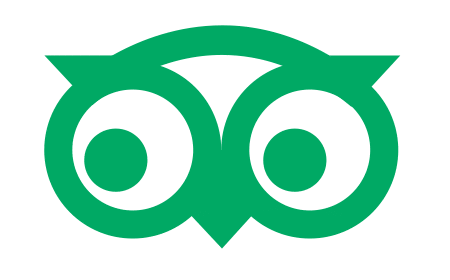的点评
A unique University museum
Pavia University History Museum的点评
点评:How often can you visit a University that can trace its roots to 825? Not 1825, 825. The museum is only open limited hours, so it does take some planning to get in. Totally worth it. You won't see this back home.
The history in this museum focuses on a few personalities, particularly a few of the great scientists in the history of the University like Alessandro Volta of Volta-ge fame and Camillo Golgi, Nobel Prize winner in Medicine in 1906. The items are amazing, from preserved body parts used to teach medicine back then to real-life pioneering shiny electronic and scientific equipment that makes steampunk seem so real.
To be clear, the medical school teachers had a thing for preserving specimens of certain kinds of anatomy, so this is NOT for the squeamish. But it's how you taught medicine in the 18th Century. Be sure to google 'Antonio Scarpa' before you come.
Einstein visited Pavia, and there are even a few letters from him.
Most of the material in the museum is in Italian, of course, but you can download an app with a lot of English language information about many of the displays.
The history in this museum focuses on a few personalities, particularly a few of the great scientists in the history of the University like Alessandro Volta of Volta-ge fame and Camillo Golgi, Nobel Prize winner in Medicine in 1906. The items are amazing, from preserved body parts used to teach medicine back then to real-life pioneering shiny electronic and scientific equipment that makes steampunk seem so real.
To be clear, the medical school teachers had a thing for preserving specimens of certain kinds of anatomy, so this is NOT for the squeamish. But it's how you taught medicine in the 18th Century. Be sure to google 'Antonio Scarpa' before you come.
Einstein visited Pavia, and there are even a few letters from him.
Most of the material in the museum is in Italian, of course, but you can download an app with a lot of English language information about many of the displays.
翻译:你多久能参观一所可以追溯到825年的大学?不是1825,而是825。博物馆只开放有限的时间,所以进去参观需要一些计划。绝对值得。你在家乡看不到这样的景象。
博物馆的历史主要集中在一些人物身上,尤其是大学历史上几位伟大的科学家,比如著名的伏打科学家亚历山德罗·伏特和1906年诺贝尔医学奖得主卡米洛·高尔基。馆内藏品令人惊叹,从当时用于医学教学的保存人体器官,到现实生活中闪亮的电子和科学设备,这些设备让蒸汽朋克的氛围显得如此真实。
需要说明的是,医学院的老师们对保存某些解剖标本情有独钟,所以这不适合胆小的人。但这却是18世纪医学教学的缩影。来之前,一定要先谷歌搜索“安东尼奥·斯卡帕”。爱因斯坦曾到访过帕维亚,馆内甚至还保留着他的几封信。
当然,博物馆里的大部分资料都是意大利语的,但你可以下载一个应用程序,里面有很多关于许多展品的英文信息。
博物馆的历史主要集中在一些人物身上,尤其是大学历史上几位伟大的科学家,比如著名的伏打科学家亚历山德罗·伏特和1906年诺贝尔医学奖得主卡米洛·高尔基。馆内藏品令人惊叹,从当时用于医学教学的保存人体器官,到现实生活中闪亮的电子和科学设备,这些设备让蒸汽朋克的氛围显得如此真实。
需要说明的是,医学院的老师们对保存某些解剖标本情有独钟,所以这不适合胆小的人。但这却是18世纪医学教学的缩影。来之前,一定要先谷歌搜索“安东尼奥·斯卡帕”。爱因斯坦曾到访过帕维亚,馆内甚至还保留着他的几封信。
当然,博物馆里的大部分资料都是意大利语的,但你可以下载一个应用程序,里面有很多关于许多展品的英文信息。
此点评仅代表旅行者个人的主观意见,并不代表TripAdvisor以及其合作方的意见。
关于我们
|
新闻动态
|
商务合作
|
会员中心
|
业主中心
|
业主通
|
常见问题
|
意见反馈
|
联系我们
|
营业执照
© 2025 Tripadvisor 版权所有。
使用条款 |隐私政策 |网站工作原理
部分照片由 VFM Leonardo 提供。
* Tripadvisor不是旅行社,也不是旅游预订服务代理商。我们提供免费、客观、公正的旅游资讯服务。 (显示更多)
TripAdvisor LLC 既不是预订代理商,也不是旅游运营商,不会向网站用户收取任何服务费。 按照规定,在 Tripadvisor 发布机票价格、游览和旅行套餐的合作伙伴(航空公司、旅行提供商及预订代理商),其标价须包含所有费用和附加费用。 例如, 机场出入境税费、消费税与其他服务费、手续费、杂费及附加费用。 当您向我们的某个合作伙伴进行预订时,请务必查阅他们的网站以了解当地行政部门要求的所有适用费用的具体情况。 除非另有说明,机票价格通常指的是一个人的价格(以人民币计)。
为方便起见,TripAdvisor LLC 根据从我们的预订合作伙伴获取的空房率计算每个酒店的均价。 对于游览和景点来说,所显示价格通常是每位成人的最低可用价格。 对于列出的任何旅行套餐或优惠,TripAdvisor LLC 无法保证任何特定的费率或价格。 此外,酒店均价每晚会更新,并以您的首选币种表示(使用现行汇率)。 由于这些已换算的价格是预估价格,因此,有关具体金额和币种请与预订网站进行核实。
此外,TripAdvisor LLC 无法保证我们网站上宣传的价格随时有效。 标价可能需要预订一定天数才能生效,或有不可用日期、使用条件或限制。
TripAdvisor公司对外部网站的内容一概不负责。优惠价格中不含税和其他费用。
ICP证:沪B2-20200433
沪ICP备20013175号
 沪公网安备31010502005427号
沪公网安备31010502005427号鹰程信息技术(上海)有限公司
货币/国家及地区
¥CNY
中国

